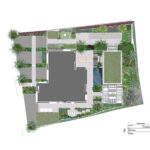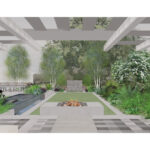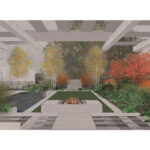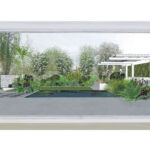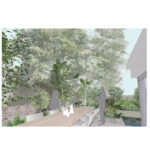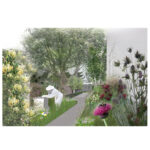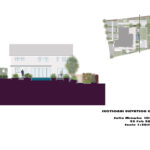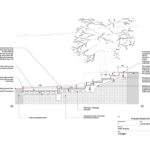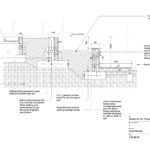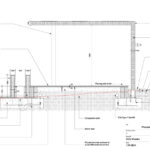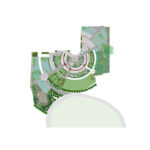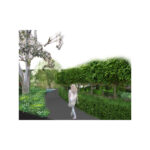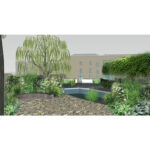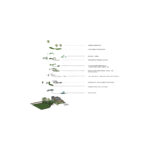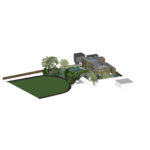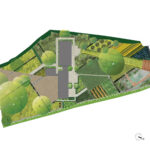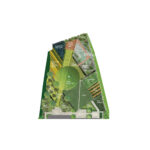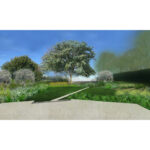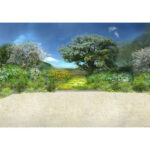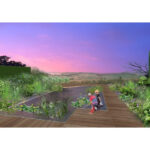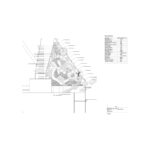Zofia Mrowka
With degrees in Landscape Architecture and Classics and having worked previously in interior design and managing architectural renovations, I decided to broaden my training to expand my experience and appreciation of art and design. This led me to finally delve into the realm of garden design, something that has always been an ambition and love.
I have a passion for plants and horticulture, due to my previous career as a Horticultural Manager, having also obtained the RHS level 2 Certificate in Horticulture and I feel confident that my plant knowledge is an asset to support me in my design.
I believe understanding living systems and communities, while developing a multifunctional and ecological approach to gardens, within the context of the wider landscape and green infrastructure as a whole, will help us tackle the future challenges we face in achieving a sustainable future for the wellbeing and enjoyment of all.
I aim to create spaces that not only work for you, but that help to enhance the equilibrium of the incredible ecosystems and diversity of wildlife that inhabit our natural environment, which we treasure so much.
I am based in Hampshire, but work on projects all over London, the Home Counties, UK and Greece.
Front and rear wrap-around gardens were designed for an architect and interior designer couple inspired by Annie Elbers’ Bauhaus tapestries. Due to a sloping site, a terraced scheme was designed to maximise the functionality of the garden, with styling echoing modernist sensibilities with sleek rectilinear lines and contemporary materials such as sawn and flamed granites with porcelain terraces and clad retaining walls.
Pattern making inspired by the ratio and form found in the tapestries was translated into the paving design with bespoke sized setts with varying tonalities. Colour is introduced through the seasonality of foliage change with warm yellows of the autumnal hues of Betula pubescens and reds and russets of Cornus kousa var. chinensis and Euonymous europeaus. Understory planting of ferns, woodland rushes such as Luzula nivea and sedge Carex pendula with spring ground cover of Anemone nemerosa bulbs compliment the scheme both architecturally and in context of the garden’s situation within the landscape of the local Chiltern ancient woodlands.
A Georgian cottage in Kew Gardens formed the backdrop for this brief: to create a garden that would work for the events that are held here, in particular due to changes in wedding licensing, to allow for ceremonies in the outdoor space. Observing the historical connection of Kew to the River Thames the garden was inspired by the activity of osier willow harvesting and natural basketry production that occurred prolifically at the time the cottage was originally built and inhabited. An array of concentric paths rills, pools and willow-banks and sculptures that represent the nature of life on historical riverside landscape nearby, provide a series of spaces to allow events to take place comfortably, privately and in a relaxed setting. An Accoya timber woven table forms the central feature representing the forms of basket weaving and also providing dining and seating to support the functionality of the wedding events.
A foraging family garden in the heart of the chilterns AONB was designed to combine the clients’ wish for a garden that helped the family to move to a more self-sufficient lifestyle. It also needed to allow for explorative and playful elements for the children to enjoy and learn, whilst satisfying their requirements to provide entertainment and dining space for events.
Inspired by the arable landscape and stunning views to the farmland valleys beyond the design evolved to provide formal terracing of riven clunch coloured limestone by the house, transitioning to an explorative and cultivated patchwork layout of crops, orchards and edible perennial areas. These are dissected by hedgerows and wildflower meadow vistas to enable both foraging, while linking to the landscape beyond. Hedgerows would continue to the front to give a sense of arrival to the garden as is discovered to the rear, while the beech woodland creates a framework for natural play with spaces made for climbing, balancing, dens and sensory exploration. One’s journey through the garden culminates with a natural swimming pool and deck area where the stunning sunsets and views to the west beyond could be appreciated on a balmy summer’s eve.

